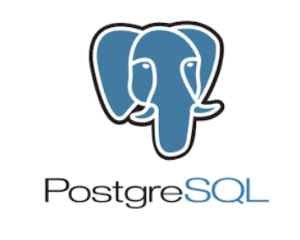Learn how to fix the “Permission Denied for Schema” PostgreSQL error. Our PostgreSQL Support team is here to help you with your questions and concerns.
“Permission Denied for Schema” PostgreSQL Error | Troubleshooting
 Have you been running into the “PostgreSQL error: Permission denied for schema”?
Have you been running into the “PostgreSQL error: Permission denied for schema”?
This error indicates that the user attempting to access a specific schema within the database does not have the needed permissions. This issue often arises due to insufficient privileges, explicitly denied access or ownership conflicts.
Today, we are going to explore why this error occurs, common scenarios where it is encountered, and effective ways to resolve it.
An Overview:
Why Does This Error Occur?
The error is usually triggered when the user lacks the appropriate privileges to perform actions like `SELECT`, `INSERT`, `UPDATE`, `DELETE`, or `DDL` operations within a schema. Common reasons include:
- The user does not have permissions to view or modify the schema.
- Even if the schema is accessible, the user may lack permissions for its tables, views, or functions.
- The user’s access might have been explicitly revoked.
- The user does not own the schema or its objects and hasn’t been granted permissions by the owner.
Common Scenarios for the Error
- Running a Query:
Example:
SELECT * FROM schema_name.table_name;The error occurs if the user doesn’t have `SELECT` privileges on the schema or table.
- Creating or Modifying Objects:
Example:
CREATE TABLE schema_name.new_table (...);The user needs `CREATE` privileges to add objects to the schema.
- Accessing a Shared or Restricted Schema:
In databases with multiple users, schemas are often segmented to restrict access. Users may encounter permission issues when accessing schemas they don’t own or aren’t granted access to.
How to Fix the Error
The solution depends on the specific privileges the user needs. Here are step-by-step fixes:
- First, grant usage permission on the schema. To allow basic access to the schema:
GRANT USAGE ON SCHEMA schema_name TO username;This permits the user to access the schema but doesn’t grant interaction with its objects (like tables or views).
- Then, grant object-level permissions if the user needs to interact with tables, views, or functions within the schema:
- Grant `SELECT` Access (Read):
GRANT SELECT ON ALL TABLES IN SCHEMA schema_name TO username; - Grant Write Access (`INSERT`, `UPDATE`, `DELETE`):
GRANT INSERT, UPDATE, DELETE ON ALL TABLES IN SCHEMA schema_name TO username;
- Grant Function Execution:
GRANT EXECUTE ON ALL FUNCTIONS IN SCHEMA schema_name TO username;
- Grant `SELECT` Access (Read):
- Now, grant CREATE privileges to enable the user to create new objects (e.g., tables) within the schema:
GRANT CREATE ON SCHEMA schema_name TO username; - We can also grant ownership or superuser access for full control over the schema:
- Transfer Ownership:
ALTER SCHEMA schema_name OWNER TO username; - Superuser Access (If Necessary):
If the user is a superuser, they will have full access to all objects in all schemas by default. However, superuser privileges should only be granted for administrative tasks due to their broad scope.
- Transfer Ownership:
- To diagnose permission issues, check the existing privileges:
- View Schema Permissions:
\dn+ schema_nameThis displays schema details, including current permissions.
- View Object-Level Permissions:
\dt+ schema_name.*
It lists all tables in the schema and their respective permissions.
- View Schema Permissions:
Additional Tips
- If new objects are frequently added to the schema, configure default privileges to grant access automatically:
ALTER DEFAULT PRIVILEGES IN SCHEMA schema_name
GRANT SELECT, INSERT, UPDATE, DELETE ON TABLES TO username;
- For larger systems with many users, assign users to roles (groups) and manage permissions at the role level:
- Create a Role:
CREATE ROLE role_name; - Grant Role to Users:
GRANT role_name TO username; - Assign Permissions to the Role:
GRANT SELECT ON ALL TABLES IN SCHEMA schema_name TO role_name;
- Create a Role:
[Need assistance with a different issue? Our team is available 24/7.]
Conclusion
The “permission denied for schema” error in PostgreSQL is a common issue that can be resolved by carefully reviewing and managing user permissions. Whether it involves granting schema access, object-level privileges, or using roles for streamlined management, understanding the root cause helps resolve the problem easily.
In brief, our Support Experts demonstrated how to fix the “Permission Denied for Schema” PostgreSQL error.



0 Comments